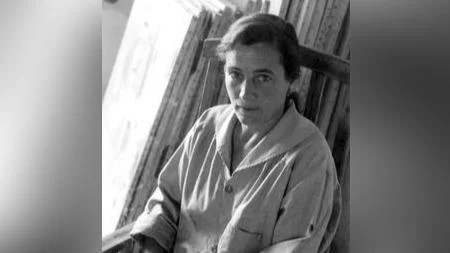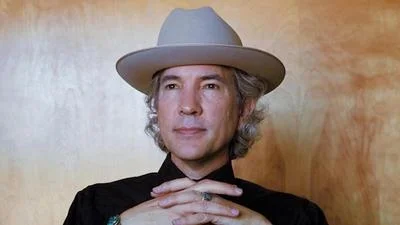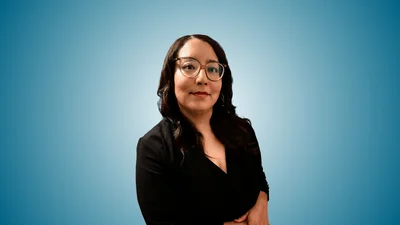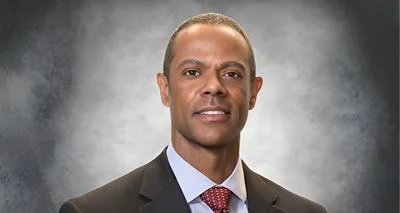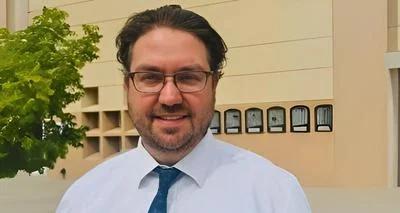Agnes Bernice Martin | Wikipedia
After reading three biographies about famed artist Agnes Martin, I still feel as though I don’t really know Martin as a person, the warts and wonder of the woman.
Sure, I can tell you the basics: her birth in Canada to a Presbyterian family, her athletic ambitions (a swimmer), her early work in Washington state, her move to New York to study art, then New Mexico to teach and back to New York, her battle with schizophrenia, then worldwide fame, awarded the National Medal of Arts by President Bill Clinton in 1998.
But what was behind the gaze in the woman’s eyes?
Agnes Martin and Me by Donald Woodman did a splendid job describing her battle with schizophrenia and his work with Martin, offering an insider’s view on her life and her loneliness. Hearing him speak on his book was a fascinating journey, something I write about in my book Tilt.
Nancy Princenthal’s Agnes Martin: Her Life and Art provides a fine summary and chronology of Martin's life, but falls short in capturing the essence, the internal heartbeat, of the woman.
Agnes Martin: Painter, Pioneer, Icon by Henry Martin (no relation) conveys a deep love of the artist and her work but misses the insider instincts of the icon, something Woodman was able to provide.
It wasn’t until I heard Karen Yank give an hour-long presentation at the Albuquerque Museum that I began to get a broader sense of Martin as a person. With no mention of Martin’s schizophrenia, Yank conveyed nothing but love and respect for the artist who was sometimes a mentor, other times a mother-like figure to Yank.
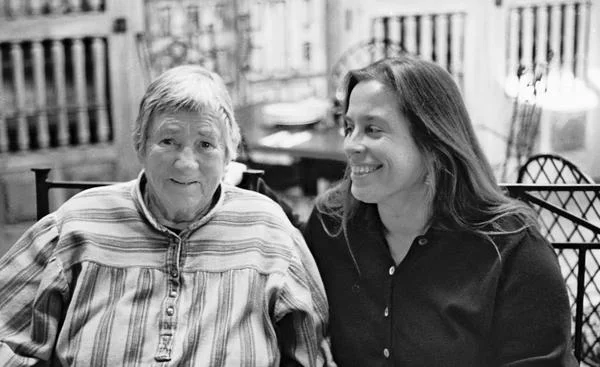 Agnes Martin & Karen Yank, Taos, NM, 2004. Photo by Rodney Hamon, provided by Albuquerque Museum
Agnes Martin & Karen Yank, Taos, NM, 2004. Photo by Rodney Hamon, provided by Albuquerque Museum
Titled Lessons in Abstraction and presented in front of a packed auditorium, Yank’s exposition recalled her journey with Martin, intertwining her own flowering as a noted sculptor.
From an artist retreat where Yank said Martin was “sage-like” to their eventual mentorship in New Mexico, Yank reminded us that Martin encouraged her to “find your message,” to “find your true inspiration” and “meditate on purpose.”
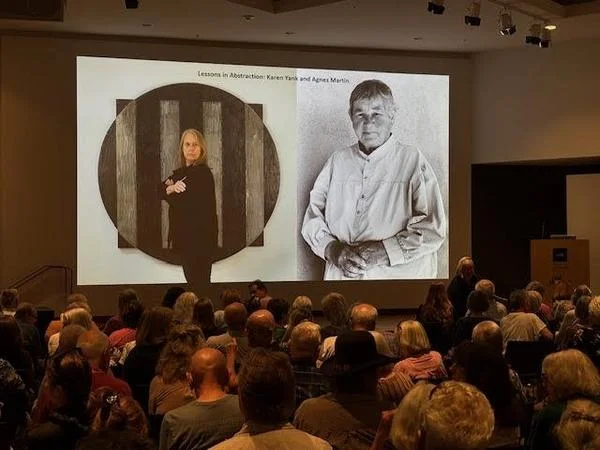 Packed auditorium. Photo by Brian Nixon
Packed auditorium. Photo by Brian Nixon
Yank learned from Martin that “To be successful, learn what you need to say.”
The audience sat in rapt attention the entire time, watching the personal slides Yank provided. As marvelous a narrative it was, I was impressed with the small details Yank offered. Here’s a few:
- Martin valued quiet time.
- She liked to start her time with Yank drinking tea.
- Martin believed in fate. I interpreted this as a type of life-providence, an unfolding of events with a specific purpose.
- She loved trucks.
- Was a meat and potato type of eater.
- Stressed beauty, perfection, and truth.
Yank also gave four summary lessons learned from Martin:
- One, continue on.
- Two, follow fate.
- Three, pursue your passion.
- Four, I was wrong about isolation, live life to the fullest.
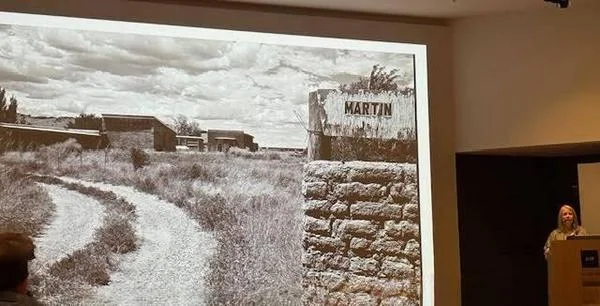 Karen Yank speaking with slides. Photo by Brian Nixon
Karen Yank speaking with slides. Photo by Brian Nixon
I’ve tracked down Martin’s studio in the North Valley of Albuquerque where she rented space to paint, the neighborhood she lived while teaching in Albuquerque (incidentally, not too far away from artist Richard Diebenkorn), and have sat in the Agnes Martin room at Taos’ Harwood Museum, New Mexico’s version of the Rothko Chapel in Houston, Texas. I have seen dozens upon dozens of Martin’s artwork in museums throughout the US.
Yet, the most meaningful aspect for me—information that gave me the greatest insight into the woman— was to learn that prior to Martin’s death she sang Christmas carols with Arnold Glimcher, then told him to “Surrender to beauty.”
Some see the simple lines and colors of Martin’s work as unsophisticated, but behind the lines lies the heart of a lover, a human being reminding us that beauty abounds— so bask in it.
Brian C. Nixon, Ph.D., is Chief Academic Officer and professor at Veritas International University in Albuquerque. As a writer, musician, and artist, his interests surround the philosophical transcendentals: truth, beauty, and goodness. You can contact Brian via his Bandcamp email address: https://briancharlesnixon.bandcamp.com
